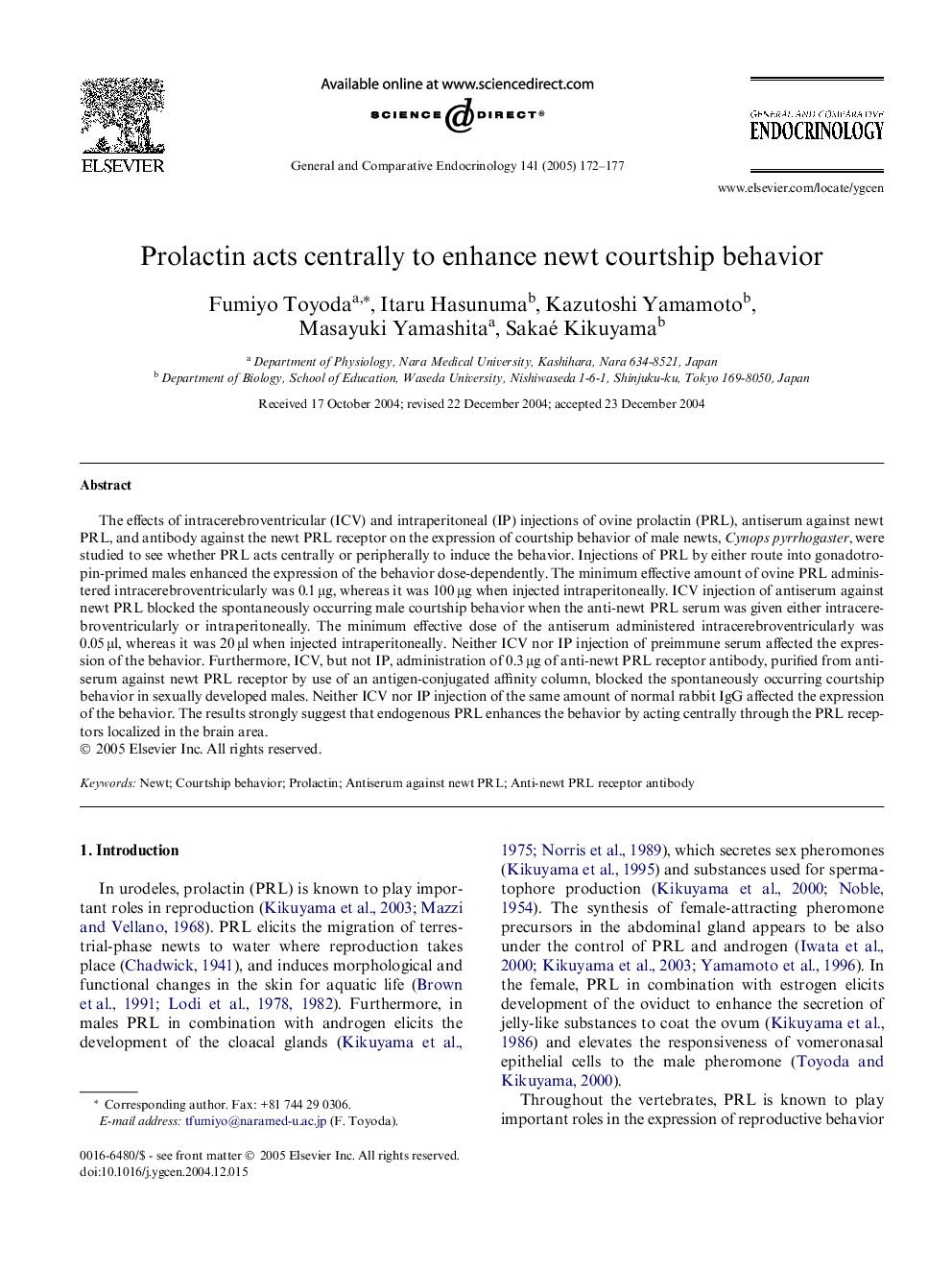| Article ID | Journal | Published Year | Pages | File Type |
|---|---|---|---|---|
| 9113224 | General and Comparative Endocrinology | 2005 | 6 Pages |
Abstract
The effects of intracerebroventricular (ICV) and intraperitoneal (IP) injections of ovine prolactin (PRL), antiserum against newt PRL, and antibody against the newt PRL receptor on the expression of courtship behavior of male newts, Cynops pyrrhogaster, were studied to see whether PRL acts centrally or peripherally to induce the behavior. Injections of PRL by either route into gonadotropin-primed males enhanced the expression of the behavior dose-dependently. The minimum effective amount of ovine PRL administered intracerebroventricularly was 0.1 μg, whereas it was 100 μg when injected intraperitoneally. ICV injection of antiserum against newt PRL blocked the spontaneously occurring male courtship behavior when the anti-newt PRL serum was given either intracerebroventricularly or intraperitoneally. The minimum effective dose of the antiserum administered intracerebroventricularly was 0.05 μl, whereas it was 20 μl when injected intraperitoneally. Neither ICV nor IP injection of preimmune serum affected the expression of the behavior. Furthermore, ICV, but not IP, administration of 0.3 μg of anti-newt PRL receptor antibody, purified from antiserum against newt PRL receptor by use of an antigen-conjugated affinity column, blocked the spontaneously occurring courtship behavior in sexually developed males. Neither ICV nor IP injection of the same amount of normal rabbit IgG affected the expression of the behavior. The results strongly suggest that endogenous PRL enhances the behavior by acting centrally through the PRL receptors localized in the brain area.
Keywords
Related Topics
Life Sciences
Biochemistry, Genetics and Molecular Biology
Endocrinology
Authors
Fumiyo Toyoda, Itaru Hasunuma, Kazutoshi Yamamoto, Masayuki Yamashita, Sakaé Kikuyama,
